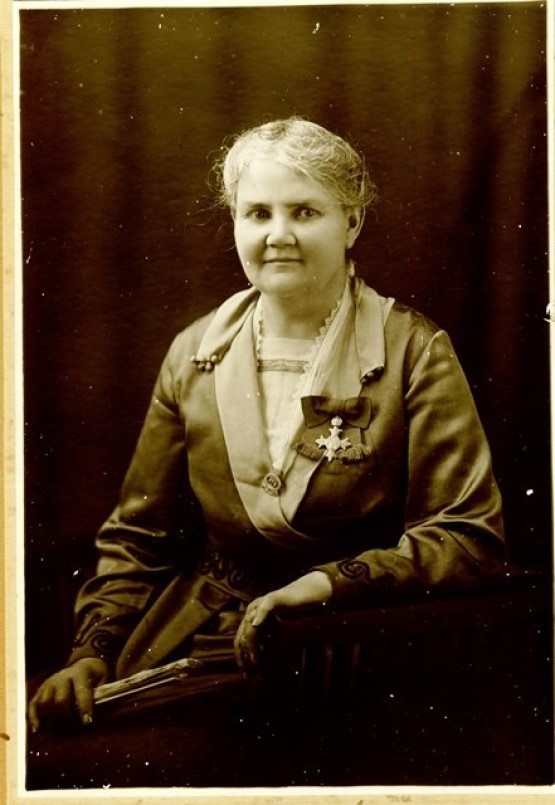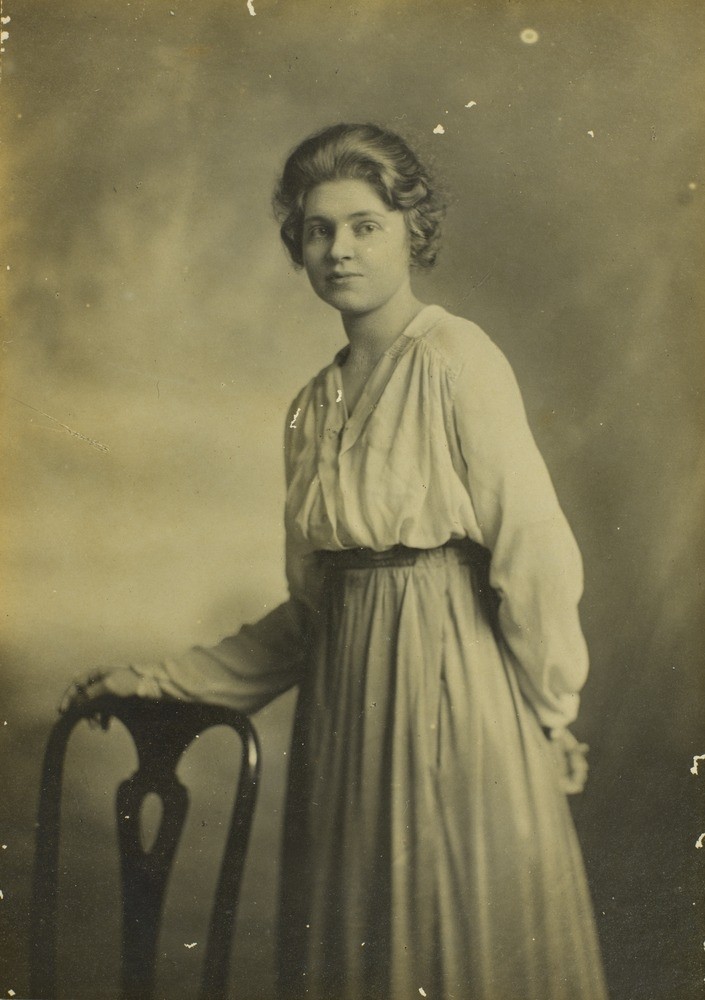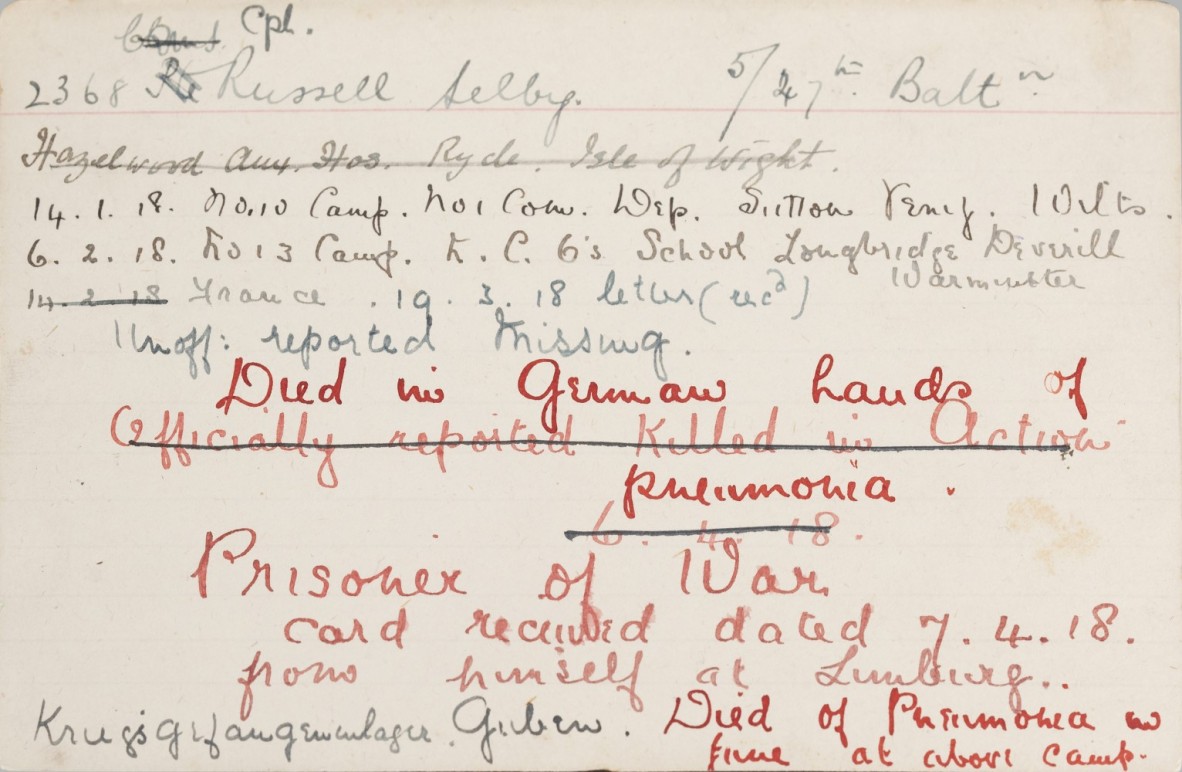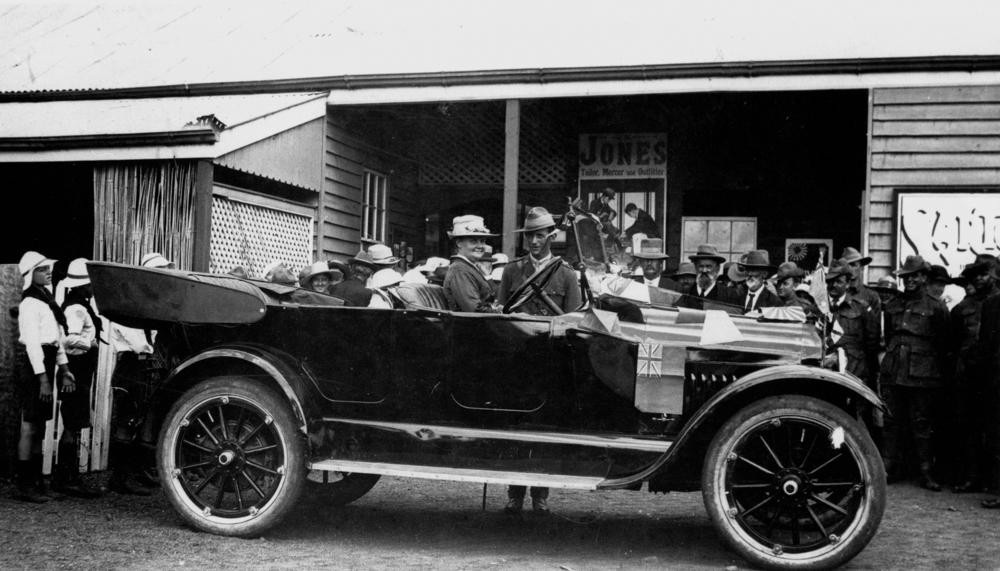Mrs Annie Margaret Wheeler was 47 when the First World War began in August 1914. She was the eldest daughter of graziers from a station near Dingo in central Queensland. After finishing her education at Rockhampton Convent School, she undertook nursing training at Sydney Hospital. Annie married Henry Gaudiano Wheeler in Rockhampton, and they lived on his property, Cooroorah Station, near Blackwater. Annie was 36 when her husband died in 1903 after a horse-riding accident, leaving her to bring up their only child, a daughter named Portia. Annie took up residence in Rockhampton, but a decade later decided they should travel to England, to reconnect with relatives, particularly her husband’s family, whom she had remained close to, and to complete Portia’s education.

Mrs Annie Wheeler c 1920. Image courtesy of Capricornia Coast Historical Society
When war broke out, Annie and her daughter were living near Portia’s finishing school at Eastbourne, close to members of the Wheeler family. Annie felt a burning desire to aid the war effort, and she began receiving letters from women she knew back at home who were searching for their sons. They hadn’t heard from them, and feared their boys were wounded, captured or even killed. She and Portia travelled regularly to London to visit A.I.F. Headquarters and the Australian Red Cross Missing and Wounded Bureau. Annie set up a detailed card index system, trying to account for every central Queensland soldier serving overseas. Eastbourne was an hour and a half by train from Victoria Station, so when the commuting became too arduous Annie decided that she and Portia should move to London.

Portia Jean Wheeler, standing portrait, London, United Kingdom, ca. 1914-1918, Image no. 30586-0001-0024, John Oxley Library, State Library of Queensland.
They found a boarding house in London at 9 Lancaster Gate, which was owned by a Mrs Grimley, a Brisbane woman. It was close to Hyde Park and, more importantly, close to AIF Headquarters in Horseferry Road, Westminster. Annie and Portia spent their days visiting wounded soldiers, writing to families back home, making up and sending parcels from families to soldiers at the front, visiting the war office for information on missing soldiers, and volunteering at the Anzac Buffet, which was located near AIF headquarters and offered soldiers free meals and a place to relax with other Australians.
Annie was soon receiving around 65 letters a week from soldiers, and then there were the letters, cables and parcels from home which needed attention. A small flat at Westminster Gardens, just off Victoria Street, became available and Annie jumped at the chance to be even closer to AIF Headquarters, the Red Cross and cable office. By this time, Annie had a ‘Deputy’ working in Rockhampton, her good friend Mary Trotman. Mary would cable requests for information from central Queensland families direct to Annie, who would then seek information using her ever-widening range of sources. Annie and Portia’s reputation was growing, and soldiers from central Queensland would often visit them. They in turn visited men in hospital, bringing them whatever they needed and passing on letters and parcels from home. They also supplemented allowances for soldiers on leave. Annie started to become known as the ‘Mother of the Queenslanders’. She even received letters from one woman, Jessie Richards, who was living in Montana in the United States.

Index card kept by Annie and Portia Wheeler on Selby Russell, OM82-67 Mrs H. G. Wheeler Correspondence, 1918, John Oxley Library, State Library of Queensland.
By August 1917, however, the work was starting to take its toll on Annie. Because she had worked as a private nurse in Rockhampton, she knew many of the boys and the families with whom she was corresponding, and every death was a blow. Her doctor ordered her to rest. She left to stay with the Wheelers back in Eastbourne and left everything in Portia’s capable hands. The Rockhampton community funded a nurse to assist her. But Annie soon returned and was again working tirelessly. In the lead-up to Christmas 1917, she suffered a breakdown. Again, Portia took over. She hired more help and rented additional rooms at Westminster Gardens. Annie returned to work, and by early 1918, they had over 2,300 soldiers on her ‘books’. Annie was sending home detailed letters every fortnight which were then published in The Capricornian and The Morning Bulletin newspapers; she was becoming an unofficial war correspondent, and the people of Rockhampton responded by setting up a special fund to support her work.

Mrs Wheeler's index card boxes, OM82-67 Mrs H. G. Wheeler Correspondence, 1917–1919, John Oxley Library, State Library of Queensland.
After the Armistice in November 1918, Annie and her daughter stayed on in London for a time, tying up all their loose ends. Finally, in November 1919, she decided it was time to return home. The Australian government provided free passage, and when Annie arrived in Rockhampton, she was given a hero’s welcome. Over 5,000 people turned out to meet her train. Cheering soldiers pulled her car through the streets to a public reception, and other welcome home functions continued in smaller towns all over central Queensland. The Returned Sailors’ and Soldiers’ Imperial League of Australia, the forerunner to the RSL, made her an associate member (women weren’t allowed to be full members), and in 1920 Annie was appointed an OBE. Meanwhile, her daughter Portia had fallen in love with a young Australian soldier, Fred Fox, in London. Portia married him in Australia in 1920, with Annie proudly walking her daughter down the aisle.

Arrival of Mrs Wheeler to unveil the School War Memorial at Springsure, 1919, negative no. 69293, John Oxley Library, State Library of Queensland.
To learn more about Annie and her amazing World War One contributions visit Anzac Square Memorial Galleries, open 10am-4pm Sunday- Friday. Or check out these online resources:
- 30586 Mrs. Annie Margaret Wheeler papers 1884-1991
- OM82-67 Mrs A. M. Wheeler Correspondence ca 1914-ca 1919
- 30943 Discovering Annie Wheeler digital story 2017
This year to commemorate Remembrance Day Anzac Square will be sharing the personal stories of Queenslanders who have contributed to or served in past and present conflicts and peacekeeping missions, including Annie Wheeler. We call upon all Queenslanders to consider who they will stop to remember on the 11 November. Visit Our Stories page to meet more of the individuals we will be honouring. Discover more here.
More information
- Anzac Square Memorial Galleries - https://www.anzacsquare.qld.gov.au/
- One Search catalogue - http://onesearch.slq.qld.gov.au/
- Ask Us - https://www.slq.qld.gov.au/plan-my-visit/services/ask-us
Comments
Your email address will not be published.
We welcome relevant, respectful comments.